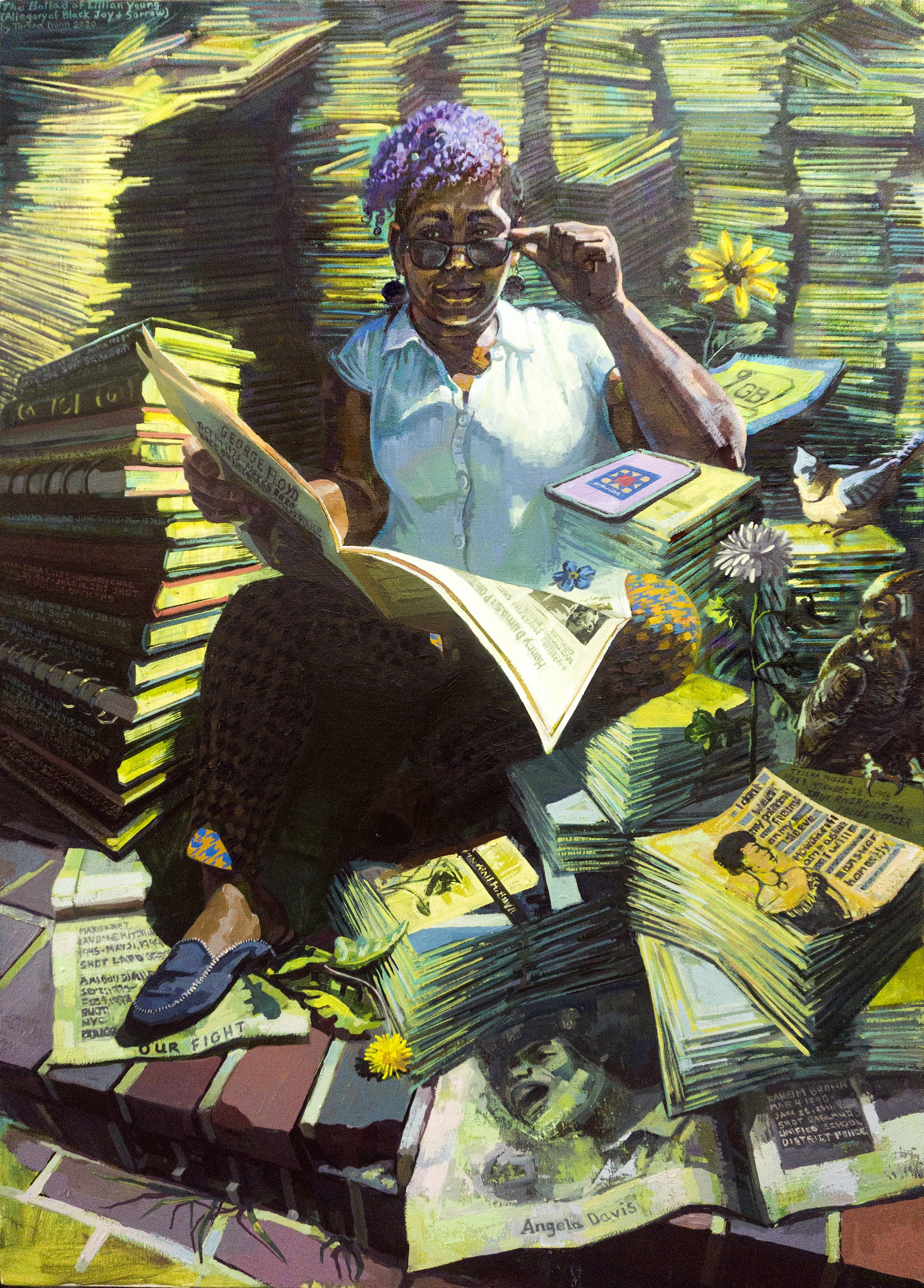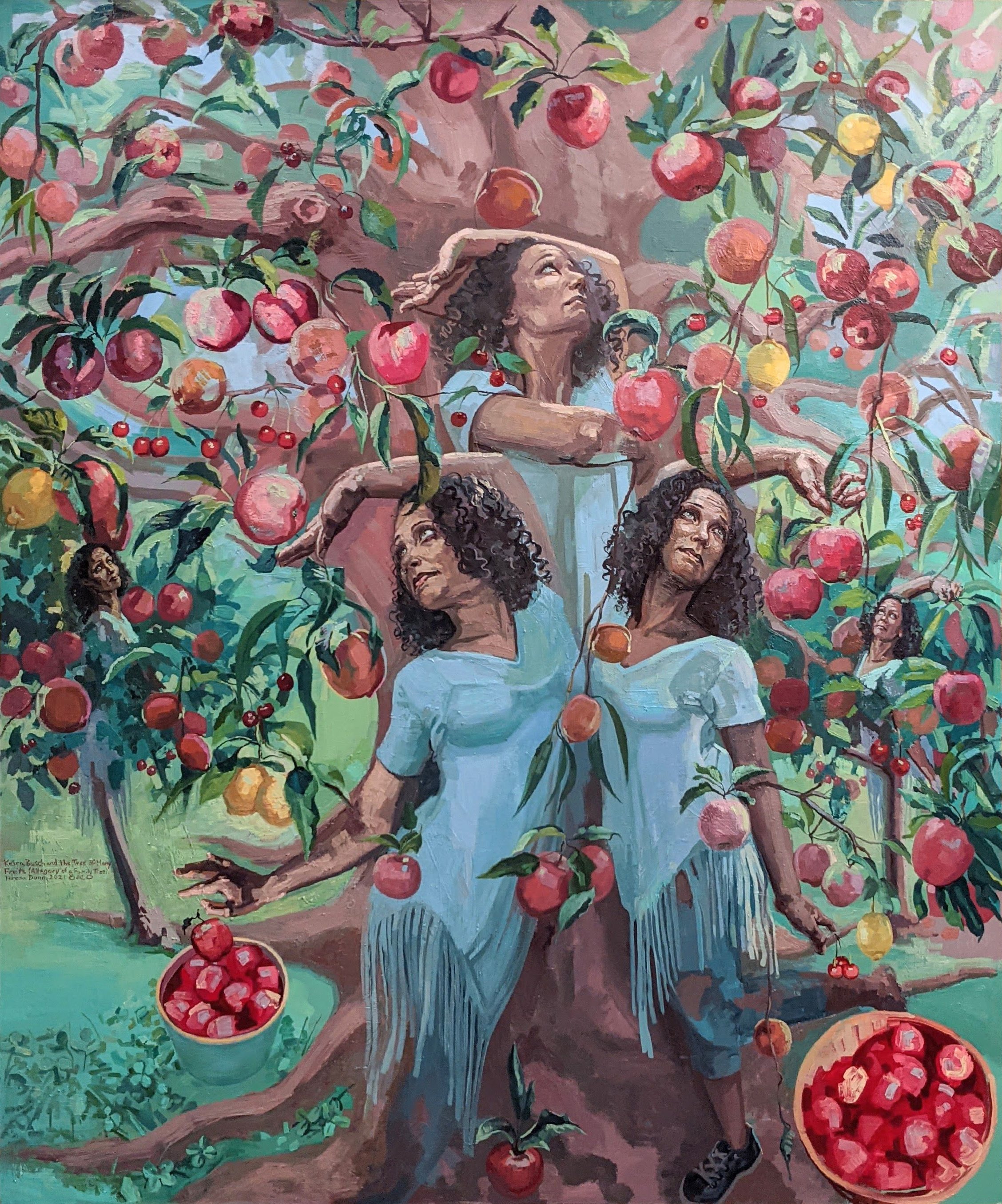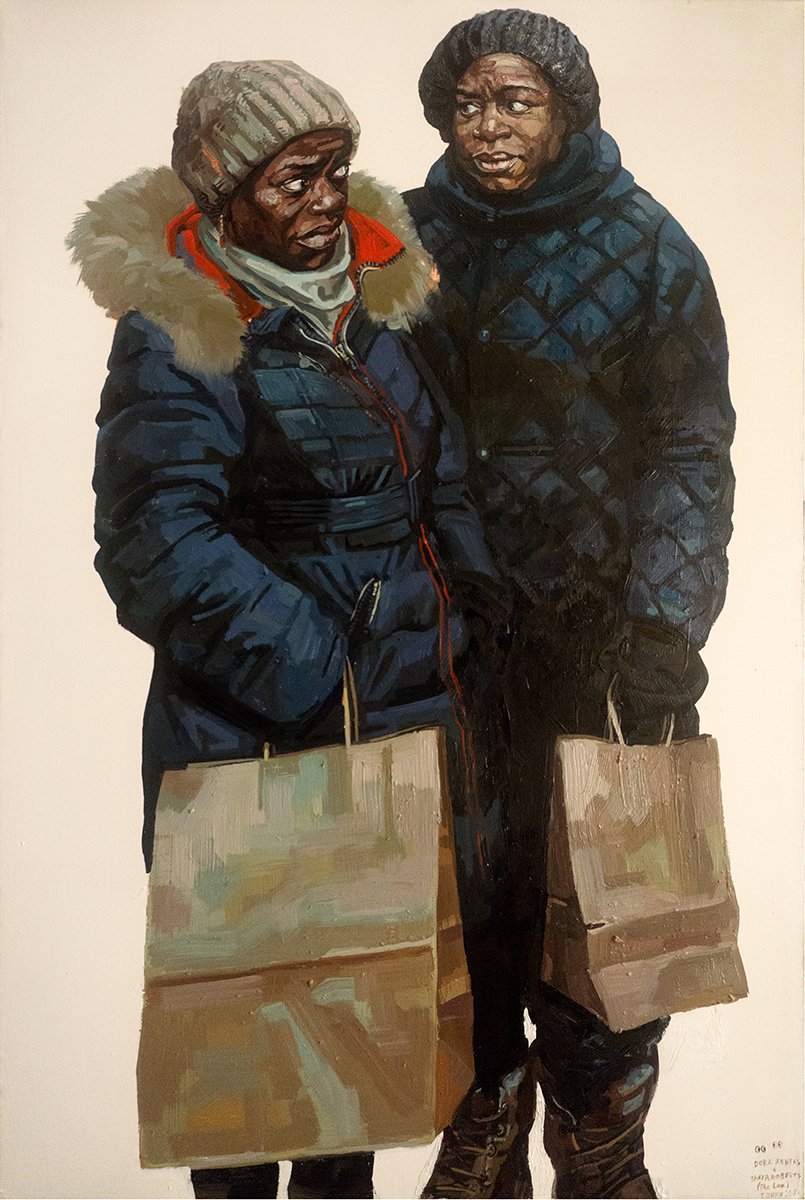ARTIST INTERVIEW: Teresa Dunn
Tell me about yourself, describe your journey as an artist
I think I have always been a maker. I drew, painted, made things out of paper, clay, or whatever materials were around the house when I was a child. But I didn’t really think about becoming an artist, nor did I seek to be one until I was well into my university studies. I started my undergraduate education as a math major and it wasn’t until two years into the program, I realized with great anxiety that I could not envision my future with math. Once I decided to take some art classes as a respite, I was pulled into drawing and painting then never looked back.
How did you get into painting? When did you develop your own style?
Painting and drawing have always been the media I most enjoy. I gravitated towards them intuitively as they aligned perfectly with my sensibilities. I love their simplicity and they are direct. Brushes and pencils are an extension of the hand heightening the touch. I cringe a little at the word style. Searching for a style doesn’t resonate with me as authentic expression. What I think about is how paint on the canvas is the residue of visual, physical, and conceptual processes as they trace the mind of the maker. When looking at my paintings or the artwork of others I am very aware of how different ways of seeing, perceiving, and being inform how form or surfaces are translated and built. How the psychology of an idea is embedded in a narrative impacts the way color is considered or how marks are made. There is a charged reciprocity between the paint, the sensory, and the psychological. Is that style? I don’t know. But that is my general approach to the painting process which is open to evolution and change as I grow as a person and a painter.
How has your heritage influenced your paintings?
I am a Mexican American woman who grew up in a small predominantly white town in the Midwest of the US. For a long time, my heritage influenced my life mainly through my physical appearance as a brown person in a mostly white family with mixed cultural traditions. This was complicated for me because although I was proud of my heritage, I strongly desired to be like my white American peers and community. It is hard to be different as a child and even more challenging to feel like you don’t belong. Race and identity were not part of the social discourse when I was a kid in the late 70s through the 80s, I didn’t have any conception of or language to describe the deep identity conflict I experienced as a child and young adult. That my skin, physical features, and cultural identity were regularly called into question by others was confusing and complicated. I wanted to be like everyone else and was perturbed at being continually asked: “What are you” or “Where are you from.” When I left for college, I abandoned my name which was Teresita (my family still calls me this and it feels like my real name) for the Americanized Teresa. My name made me feel ugly, that still stings. I regret that now, looking back, but I was exhausted by how my mispronounced name emphasized my differences. Now I work hard to celebrate my heritage and culture in my life and artwork. My current body of paintings “US” invites people of color, culturally complex individuals, and immigrants to share their stories through my paintings. My paintings push back against the notion that there is one singular way to be American. I wish my younger self could have seen artwork like mine and not felt she had to escape from herself and feel isolated or ashamed.
What are your paintings trying to tell us?
My most recent paintings amply the voices of other black and brown people, immigrants, and culturally diverse people. The paintings present inventive story telling through visually poetic interpretations of past events through speculative non-fiction, fictive futures, distorted versions of past events, and imagined alternate realities. They allow viewers to travel in time, space, and memory to connect with the lived experiences of the people whose stories are central to this work. I’m not sure my paintings “tell” the viewer something but rather they “invite” the viewers in for a conversation to imagine, dream, empathize, and feel with the people depicted in the artwork.
Are you emotionally attached to your work? Do you ever find it hard to part with a piece of artwork?
As a younger artist I was emotionally attached to my paintings. But now, no. I like my paintings to be in the world, seen and enjoyed by others. I want my work to have a life outside of my studio, not in a crate or storage closet, nor stuck on a shelf hidden away. There is a small handful of pieces I made as a budding painter that I consider breakthroughs works that I won’t sell. But it isn’t difficult to let go anymore, and I want my paintings to find homes elsewhere and continue to invite viewers in.
You’re a professor of Painting and Drawing at Michigan State University, why do you think it is important to encourage young people to do art? What is the most rewarding part of your job?
I’ve been teaching for just over 20 years now. In the way that painting was my first calling, teaching is my second. I am fortunate to be part of a collective group of artists educators who provide students with material, technical, conceptual, and critical visual thinking skills they will use in their own creative lives. Art making empowers students with the capacity to synthesize many complex ideas. Their embodied concepts take physical form and that art is a conduit for communicating culture, ideas, emotion, and can be a catalyst for change and growth for both the maker and the viewer. Seeing students grow over the years gaining skill, confidence, and maturity in craft and concept is amazing. The rewarding parts are multi-faceted. I am energized by the daily conversations and interactions I have with each person in the studio-classroom. It is incredibly rewarding to see students’ artistic growth culminating in a BFA or MFA exhibition at the end of their time with us. I also am touched when students keep in contact after graduation, so I see their continued achievement in the professional art world. It is such a pleasure to be a part of supporting someone else during their life journey.
Describe your creative process. Where do you find your inspiration?
I am compelled by the world around me in general, and specifically I’m fascinated by people and their stories. I have always loved observing people and drawing or painting the figure. Complex relationships between people are almost always the generative spark of my work. It is hard to unpack the creative process briefly because it isn’t the same for each painting or across the course of time. In general, I collect images or ideas mentally, digitally, in my sketchbook, or as objects in my studio. I don’t overthink about why I’m drawn to these ideas or things; I just collect whatever captures my attention. So, I have a vast personal library of source material to pull from. And I add to that library every time I read an interesting book, watch a compelling film, listen to a song that excites me, hear an evocative podcast, or have an intriguing conversation. Over time I recognize there are connections between the images, narratives, compositional structures that I find engaging whether it is visual, structural, narrative, systemic, or psychological. Those things feed my creative process consciously and subconsciously. Sometimes I have a clear vision of what I want a painting or body of paintings to look like, other times I only have a loose notion of where a painting could go. If the idea is clear I sometimes try to translate it faithfully and if the idea isn’t clear, I sometimes make sketches or collages to flush it out. But often I just start and let the painting work itself out on the canvas. Frequently, even with a clear idea, I make changes intuitively as I work. Incident, accident, and orchestration accumulate on the surface, and I find it exciting to respond to things that happen on the canvas in the moment. While I do have goals in a painting, the most magical moments are when the unexpected synthesizes into something I could not have predicted nor done with intention. My creative process does not seek perfection or “finish” and I love leaving work open where paint is simultaneously image yet also exposed as itself. There is something captivating about the luscious qualities of paint, color, and surface and how they coalesce in a complex dance with imagery on the canvas.
What is the best piece of advice you have been given as an artist?
This is such a difficult question because I have had so many wonderful teachers and mentors over the years, to boil it down to one singular best piece of advice is challenging. Not only in identifying what the advice is but attributing success in art or being an artist to one specific thing. I will share a few qualities passed on to me as important for artists. Never-ending curiosity is vital, what are the questions that keep you looking, thinking, or making and how do you learn to identify and ask yourself the motivating questions when you are alone in the studio? Having a rigorous work ethic and dedication to daily practice is crucial. One should lean into the impulse to make, and not be deterred by failure which is inevitable. How artists respond to failure, mistakes, or obstacles is creativity and that inventiveness is key especially when peppered with a healthy (but not too large) dose of doubt and productive self-reflection. One should not be burdened by doubt or paralyzed by failure but propelled as if from a springboard.
Which of your series of painting has been your favourite to create?
My most recent series US which has been both the most challenging and most rewarding to make for many reasons. It has been two and a half years since I started the first paintings in the series. US has empowered me to value my dual cultural heritages, my brown skin, and feel strong and confident as a woman whose experiences do not often fit the dominant narratives in this country. I also feel privileged to share the stories of others whose paths are informed by their identities as people of color or with complex cultural backgrounds. Sharing their stories helps center our narratives and reinforce that they are valid American stories. This body of work has been received well by viewers who are like the people in the paintings, people who empathize with their stories, and have garnered interest from varied venues and publications. I am energized by the conversations sparked by my paintings’ presence in the world.
What has been your biggest achievement so far as an artist?
While I am proud of my artistic record and could name specific achievements, I am most proud of being able to build a life in which my multiple identities as a mom, an artist, an educator work in concert with each other. I feel lucky to make a living painting, teaching about painting, and being a mom to an incredible kid. As a brown professional woman, that success is profoundly important. I am grateful for all the galleries, museums, publications, foundations, institutions, and individuals that have supported me over the years and look forward to continuing making and showing my paintings, hopefully with continued recognition. But navigating motherhood, art, and teaching is a treasure like no other.
Why do you think art is important in society?
Artists are observers, we see and perceive that which many overlook. Artists invite viewers to notice things that are so familiar they become invisible, and we encourage people to see them in new ways. With fresh eyes and opened minds artists compel viewers to appreciate unseen beauty, acknowledge overlooked injustice, identify important concepts, transform the ordinary into extraordinary, or recognize tension and contradiction in the everyday. Artists sit with images, objects, and ideas for prolonged periods of time arriving at a special kind of intimacy and intensity that is amplified through their interpretation or re-presentation of such.










